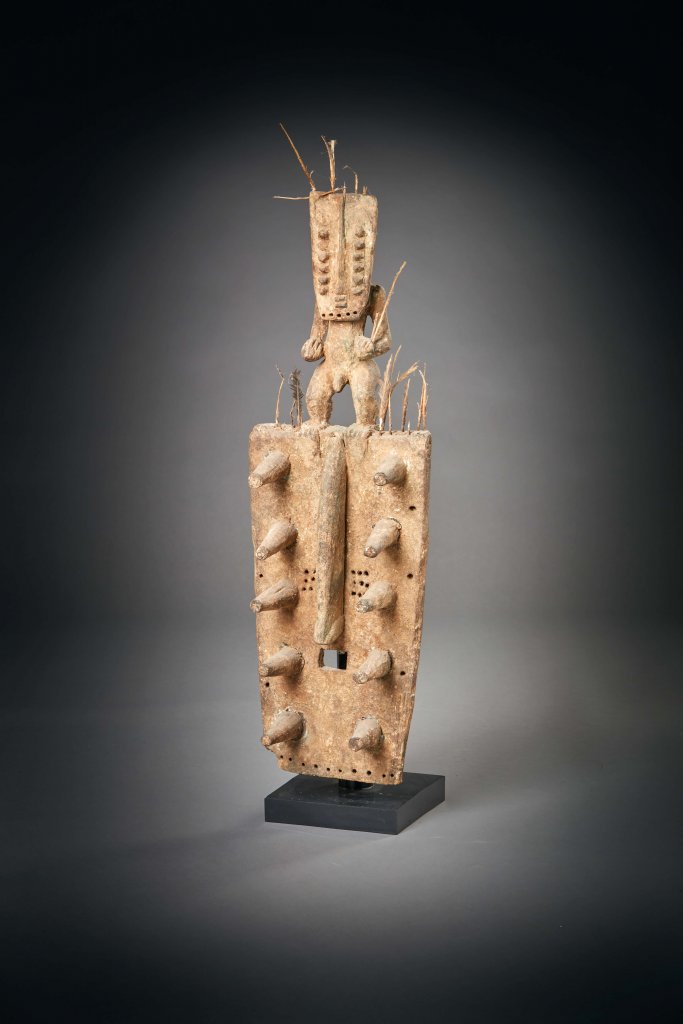Ubi Ceremonial Dance Mask
These types of rare dance masks may have been executed by the Grebo or Kru; both tribes have always shared iconographical strains in the styles of their dance masks. In addition, some ceremonies are similar in rituals where the performances are reserved for the men’s secret societies. The Grebo population or group are of Liberia, whereas the Kru population live on the border side of the Ivory Coast of Western Africa. The Kru are known to have produced similar masks resembling this style although masks aren’t very prominent in the institutional pantheon among the Kru. These groups are ruled by a chief known as Bedio who resides in almost or near total isolation from the population of the tribe. Masks were normally the personal property of the chief and may have been kept or placed around his house.
This is a plank-type mask supporting a superstructure of a dancing male ceremonial figure. In determining the ethnicity group or tribe responsible for the creation or execution of this rarely seen mask, we first read into the physical iconographies.. The well-known Grebo/Kru masks are normally depicted with two or more rows of six eyes. Some have multiple rows of four or two eyes.
This mask is depicted with two rows of five eyes, but the superimposed figure at the top has the traditional two rows of six eyes. The eyes are elongated and protruding cylindrical shapes..The dancer is able to see through the mask by looking through the two groups of drilled or burned out peepholes.
Provenance: The first known American collector was the renowned collector Lawrence P. Kolton and Rachel Angotti of Michigan City, Indiana, between the years of 1969 and 1979.

Wood, bird feathers
33 x 11 x 8 in
84 x 28 x 20 cm
Grebo/Kru people; Coastal region of Liberia, Western Africa